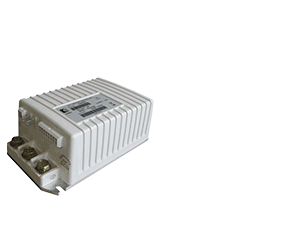For decades, the golf industry has utilized deep-cycle, flooded lead-acid batteries because of their reliability and low operating cost. However, lead-acid batteries also require regular maintenance, which is where many shortcuts and improper know-how can cause mistakes that will shorten the life of a golf car fleet. Over the years, battery manufacturers have seen an array of battery maintenance blunders, but some of the most common mistakes can be avoided through proper education. Here are a few of the mistakes people make and some tips on how to properly maintain deep-cycle, flooded lead-acid batteries.
Overcharging: When a battery is overcharged, it accelerates the corrosion of the positive plates and increases the amount of water loss that occurs during charging. To prevent overcharging, make sure your battery charger is functioning properly, is sized correctly for the battery set, and has a charge algorithm recommended by the battery manufacturer. The best way to identify overcharge is by taking specific gravity readings with a hydrometer and comparing the values with the manufacturer’s specifications.
Undercharging: Operating a battery that isn’t fully charged is common when vehicles need to be put back into service quickly. Unfortunately, this leads to progressive undercharge and hard sulfation that can hinder charging and negatively affect battery performance. The best way to avoid undercharging is simply to make sure that the batteries have enough time to complete a charge cycle. Verify your batteries are getting a full charge by checking the specific gravity of the cells with a hydrometer. If the batteries have the fully charged specific gravity reading specified by the manufacturer, the vehicle is suitable for service.
Battery Storage: Another very common mistake is storing a vehicle with its lead-acid battery(s) in a discharged state. Similar to undercharging a battery, leaving batteries discharged for a long period of time can also cause sulfation. The main reason most golf cars go into storage is during seasonal changes when cold conditions may prohibit their use. In addition to sulfation problems, when batteries are stored in a discharged state in cold climates, the electrolyte in the batteries can freeze and damage the battery case. By fully charging batteries before they go into storage and boosting every 60 days, you’ll prevent sulfation and freezing related problems.
Under Watering: The most basic and important maintenance procedure for flooded lead-acid batteries is often the one that is most commonly ignored. When batteries are charged, gassing of the electrolyte causes the loss of water through electrolysis. While this gassing is completely normal and actually beneficial to the batteries, the water lost must be replaced to prevent damage to the battery plates. Most manufacturers recommend watering every 30 days and never allowing the electrolyte to fall below the plates. Follow your manufacturer’s recommendations for watering procedures to ensure proper maintenance.
Over Watering: While watering is extremely important to the battery, it is also important to add the correct amount of water. By overwatering, you can cause electrolyte to overflow from the cells and spill out of the battery, diluting the electrolyte and diminishing the battery’s performance. This can occur when watering batteries that are not fully charged. Over watering can also occur when fleet owners utilize single point watering systems with unregulated flow or defective filling components. When watering, ensure you are following the battery and watering system manufacturer’s recommendations and check fill levels periodically to assure proper watering system operation.
Deep Discharging: Trying to get every last bit of power out of your vehicle’s batteries is never a good idea. Higher depth of discharge levels can dramatically shorten battery life and will result in having to purchase batteries more often. Battery manufacturers recommend charging at the first available opportunity, and giving the batteries a full charge whenever possible.
Knowing how to avoid some of these common mistakes can dramatically improve the performance of your batteries. While some may think these are small issues, making these maintenance mistakes can, in some instances, more than double your annual operating costs. So to ensure costs are kept low and your golf car fleet is ready for action, keep your batteries properly maintained.
Drive Time with U.S. Battery
COMMON MISTAKES THAT SHORTEN BATTERY LIFE




















